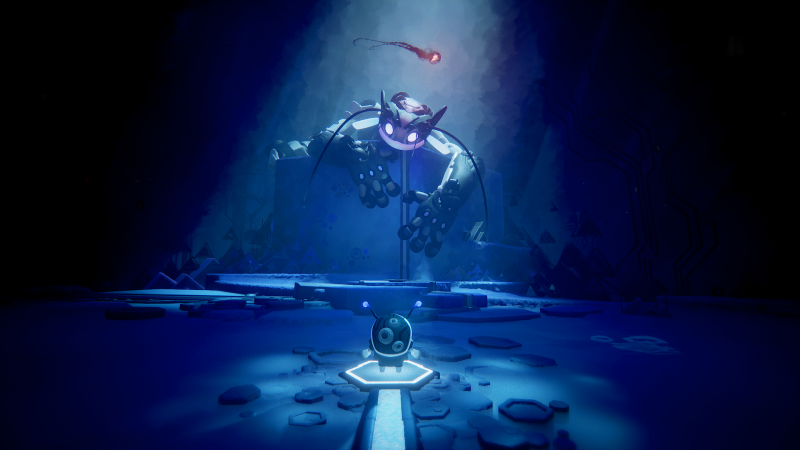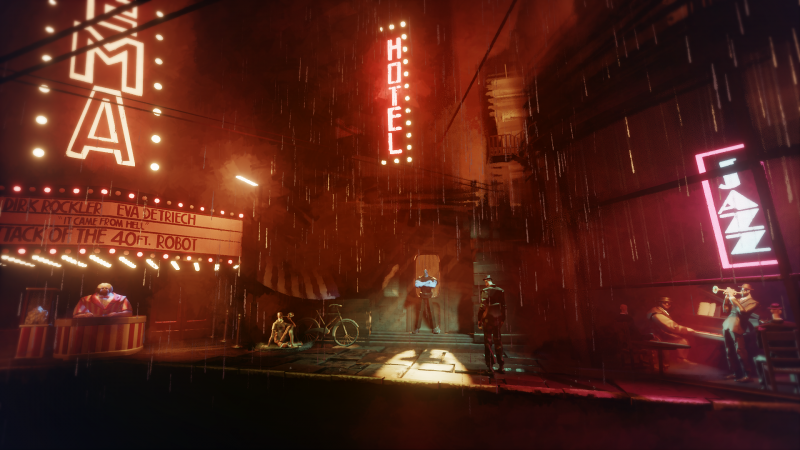Dreams

Media Molecule’s Dreams was one of the first games announced for PlayStation 4, dating back to PlayStation Meeting in 2013 when the hardware was revealed. Over the next couple of years, we were given brief looks at this ambitious content-creation experience, with a beta promised to drop in 2016. Just when it seemed we would get a taste of what to expect from Dreams, it appeared to be transforming into a nightmare, as the beta was canceled and no release date was in sight.
After going dark for an extended period of time, Media Molecule marks today as a new coming out party, stating Dreams is locked in for launch at an unspecified time in 2018. The team spent the last two years working on simplifying the game’s creation tools, getting them to a point where anyone should be able to pick up a controller and create art – that’s the hope.
Although I wasn’t given the chance to get my hands on Dreams, Media Molecule spent an hour walking me through the game's numerous avenues of play during a behind-closed-doors meeting at PlayStation Experience. The team's past success with LittleBigPlanet frequently came to mind, both in the creative dreamscapes that flashed into focus, and the design to continually reward players with new items that will deepen the well of creative options at their fingertips.

The demo began with a look at a mode Media Molecule is loosely calling the "campaign," a story driven experience called Art's Dream that weaves together three short stories based in childhood fantasy, science-fiction, and film noir worlds. All three stories are connected somehow, but the player won't know exactly how until they progress deeper within each. The story begins with two cute characters, Foxy and Francis, riding a dragon through the clouds, landing, and deciding to play hide and seek. At this point in the game, Media Molecule is fully embracing the meaning of "childhood," almost making the game look like it's being developed exclusively with the younger audience in mind. Most of the challenges range from simple jumping exercises to flicking motions to open things like Russian nesting dolls and boxes. As Foxy and Francis quest to find their dragon in hiding, they collect prize bubbles that hold items players can use in the building modes, just like in Little Big Planet.
The player can freely control Francis or Foxy (pressing the triangle button to switch between them), but can also control a customizable cursor called an Imp to highlight and interact with things in the environment. The Imp is used throughout the entire game – from menu management to making music – and is a key part of how Dreams can support numerous game styles. After locating the dragon, which sadly ends with him being caged by an unknown entity, the game immediately shifts to the Noir setting, where the gameplay shifts to point and click. The childhood vibe washes away and is replaced by darker, more serious tones. This dramatic shift follows a character named Art, who appears to be searching for a woman. He's tasked with trying to find a way aboard a train to further pursue her. Like most point-and-click titles, the player must scour the environment for things to study and interact with. The search in this instance leads to a piano with luggage next to it. Using the Imp to investigate, a flick of the wrist opens a suitcase, holding a doll. This isn't just any doll, it's a doll of Francis (from the previous story we were just in). Opening the top of the piano reveals string that seems random, but is quickly used in a trade with a musician who needs the string for her banjo. She gives Art a train ticket in exchange.

The story then shifts back for more childhood fantasy gameplay, which features stunning backdrops inspired by the work of artist Tyrus Wong, known for his work on Disney's Bambi. This second look at the world is filled with platforming peril, but doesn't last long, as the viewpoint again shifts, this time to the sci-fi setting, where we see a robot named D-Bug unleashing electrical charges to light up the world and create passage to new areas. This area is again stunning in detail, and Media Molecule representatives are quick to point out that everything we are seeing in the campaign was created using the in-game tools. No additional development tools were used to enhance any of it.
Media Molecule says that players will be able to weave together their own adventures using the creation tools, and can even auto-surf through the communities' creations, which can pull together random stories into one arc. Players will also be able to search for the type of content them want, such as game types, or even artists.
We are then given a brief look at the creation tools that players will be able to use when the game launches. For the sake of time, no items were created from scratch, but we did see just how deep this experience can be in a small pre-made area, consisting of little more than floating island and a wooden path on it. Using just the pre-assigned controller inputs, parts of the island were grabbed, moved, resized, duplicated, and even animated. Activating a "record" function, any motion the player makes is animated. We watched a Media Molecule designer hit record, pick up a piece of the wooden path, move it in the air back and forth, and then stop the recording. When he dropped in a character, the wooden path was moving back and forth, creating an aerial platforming challenge. Media Molecule continually stressed the point that most of the tools are easy to use, but it looks like the learning curve will be extensive.

Our demo ended with a look at how music and sounds can be created. For anyone that has used Garage Band and Pro Tools, Media Molecule has built something similar, allowing for music to be compiled and edited quickly. Players can import their own sounds freely, and an extensive library of instruments and sounds is also provided. Within seconds we watched a song come to life and play as a character jumped across the platform.
Dreams is a significantly deeper and more ambitious project than Little Big Planet. Players aren't just tasked to make a game, they can freely create whatever they want, whether it's a painting or an entire open world. Media Molecule offers up a wide variety of avenues to creation, whether it's starting with a blank canvas or entering someone else's creation to either add to it or see how it was created. All content shows a geneology of who created one. Players will even be able to create projects that can be worked on by numerous collaborators, much like a game development team. So you are great at art, yet stink at animation, you may find a community member that can help you bring your vision to life.
The demo made me want to try my hand at creating something, but sadly, I wasn't given the chance to play it yet. The big question surrounding Dreams is just how easy it is to create. Media Molecule believes people will be able to jump right in, but I also heard that about Little Big Planet, yet struggled to create anything meaningful without first dedicating a wealth of time to understanding the basics.

Get the Game Informer Print Edition!
Explore your favorite games in premium print format, delivered to your door.
- 10 issues per year
- Only $4.80 per issue
- Full digital magazine archive access
- Since 1991










